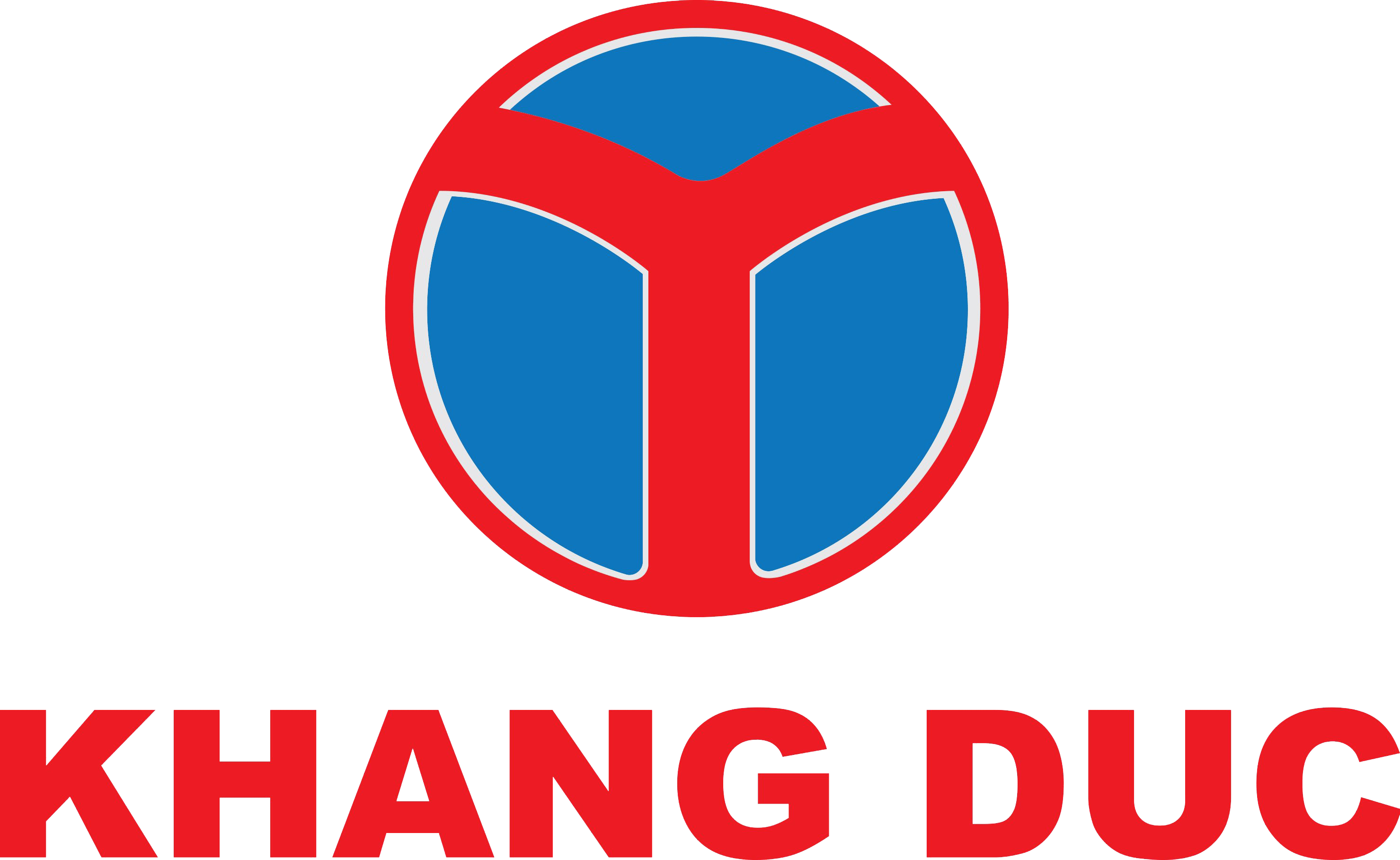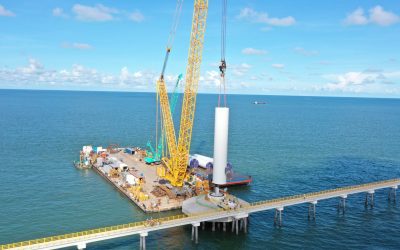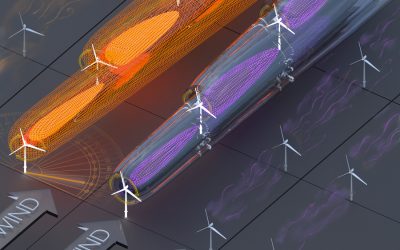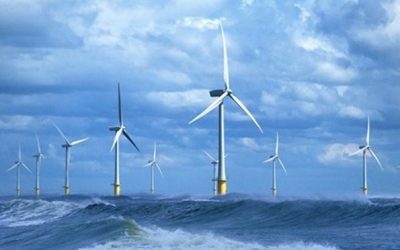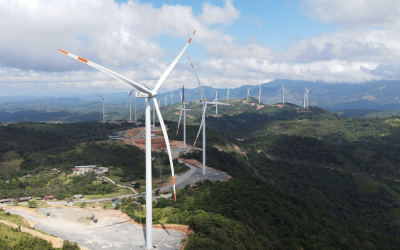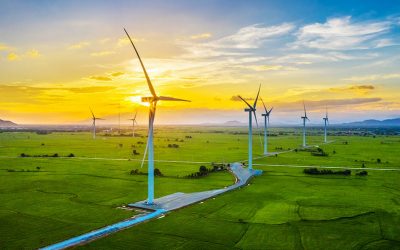Vietnam has a long coastline and great potential to generate energy from offshore wind. This is especially true in the South, South Central and Mekong Delta regions.
But serious interest in the development of offshore wind power has only recently begun. The industry holds great promise. This Article sets out Vietnam’s current policy and its plan to develop offshore wind power.
Overview
We start with Decision 391 that provides the encouragement to develop offshore wind projects. It provides general policies to develop offshore wind projects (including favorable conditions and incentives). Now, both local and foreign investors are able to develop offshore wind projects. About 36 GW have been registered for development, but no development plan has been approved. The targets are mainly situated in Binh Dinh, Phu Yen, Khanh Hoa, Ninh Thuan, Binh Thuan, Ba Ria–Vung Tau, Ben Tre, and Bac Lieu provinces where wind speed is constant. The Ministry of Trade and Industry (“MOIT”) expects that the industry will generate 8 GW per year from offshore wind in 2030, and that the output could reach 54 GW in 2045. This plan is ambitious, but it seems to be feasible given that (i) large increases in the demand for power result in a rapid expansion of capacity; (ii) Vietnam’s traditional power generation is limited; (iii) renewable energy (including offshore wind power) is an important segment of power generation in the approved national energy plan under Resolution 552; (iv) cost of wind power has dropped substantially over the last ten years and will continue to drop; and (v) technologies for wind turbines and foundations have been rapidly enhanced by developed countries and by emerging markets. This helps developers to resolve technical issues and reduce investment costs.
Offshore Wind Vs Onshore Wind
Conditions, electricity price, restrictions and regulatory procedures that apply to an offshore wind project are different from those that apply onshore. The concept of an “offshore wind power project”, as defined in Decision 39, means any grid-connected wind power project with wind turbines constructed and operated offshore – outside the lowest mean high water as [measured over] 18.6 years; and the concept of an “onshore wind power project” means any grid-connected wind power project with wind turbines constructed and operated in mainland and coastal areas of which the outer boundary is the lowest mean high water as [measured over] 18.6 years. In practice, it is hard to know whether a wind project is an onshore or offshore project due to lack of sufficient information and data to measure high and low water mean. The matter can be consulted with the Ministry of Natural Resources and Environment.
The table below compares key characteristics and indicators of each source of power:
| No | Indicators | Source of Power | Comments | |
| Onshore wind projects | Offshore wind projects | |||
| 1 | Pricing for EVN to purchase | US cents 8.5 per kWh | US cents 9.8 per kWh | These prices will apply for 20 years, if developers are able to commence their commercial operation before November 1, 2021 [under current rules]. Under Decision 39, the MOIT will submit a new pricing regime to the Prime Minister for his approval. The new pricing regime will apply to wind projects that commence their commercial operation after November 1, 2021 |
| 2 | Conditions | Conditions that apply to an onshore wind project developed by a local investor, apply equally to foreign investors. | Offshore wind projects are conditional for foreign investors3. To date, the conditions which will apply have not been specified. | |
| 3 | Land | An onshore wind project requires a large land area. Generally, approval of ministries and authorities is not required, unless the land is located within coastal communes, wards or townships adjacent to land used for national defense. | An offshore wind project has the advantage of not taking up land. The local land authority nevertheless must obtain a written approval from the Ministry of National Defense (“MOND”) before it can lease a sea surface to a foreign investor (Article 58 of the Land Law and Article 13 of Decree 43.) | As proposed by the MOIT, Vietnam needs to reserve 6,000 ha of land for onshore wind projects and 37,000 ha of sea surface for offshore wind projects. |
| 4 | Investment costs | The cost to invest in an onshore wind project is lower than the cost for an offshore wind project. | The offshore wind project has a higher investment cost and much higher production costs compared to onshore wind projects (including the cost to connect to EVN's grid). Normally, the price for EVN to purchase electricity generated from offshore wind projects is higher than the price of electricity of onshore wind projects. | |
| 5 | Requirements and restrictions under the Maritime Code | Not applicable | Offshore wind projects are subject to requirements and restrictions under the Maritime Code (including construction work). | |
| 6 | Construction | An offshore wind projects must be approved by MOND if the height of the power tower is 45 m or more. | The owner of an offshore wind project must obtain MOND's approval for construction place, and for the height of wind turbines. | Turbines used in wind farms must be new and must meet Vietnamese, IEC6 or equivalent standards. Their date of manufacture, up to the date of installation, must not exceed five years. MOIT must approve the use of second-hand turbines. |
Investment Incentives
Offshore wind projects are especially encouraged by the Government. They are entitled to exemption/reduction of rental of sea surface. They can also qualify for favorable state loans and tax incentives. Below are tax incentives applicable to offshore wind projects:
| Incentives | Corporate income tax | Import duty |
| Preferential rate | 10% applicable for 15 years; this can be extended to 30 years in special cases. | |
| Tax exemption (0% tax) | Maximum exemption period: Four (4) years. | Goods imported to create fixed assets, and materials, raw materials and semi-finished products which Vietnam is unable to produce, and which are imported for the project's production, are tax-free. |
| Tax reduction (50%) | Maximum reduction period: Nine (9) years. |
Conclusion
Vietnam’s plan to develop offshore wind projects is an effort to support and promote the global program to reduce CO2 emission. The plan is also aimed at achieving the country’s power mix plan. Development of offshore wind projects is in its early stages. The industry can develop commercially in the next ten years as cost reductions are achieved. The investment in offshore wind projects will become more attractive and feasible in 2045 once coal-fired plants must be closed and further reduction of investment costs can be achieved. There are many factors for the industry to become an important part of Vietnam’s future power mix. Achievement of this target requires the Government support/attention. To begin with, the Government should apply the favorable tariff to offshore wind projects until the young industry is ready to compete with other sources of power generation. Of course, the Government’s guarantees and subsidies are welcome by the private sector. In return, Vietnam will have a sustainable source of clean and green power, and Vietnam can reaffirm its national interest in the ocean areas where offshore wind projects are constructed.
Footnotes
1 Decision no. 39/2018/QD-TTg of the Prime Minister dated September 10, 2018 (“Decision 39”)
2 Resolution 55 of the Politburo dated February 11, 2020 (“Resolution 55”)
3 This policy is set out in Decree 31/2021/ND-CP of the Government dated March 26, 2021 (“Decree 31”).
4 Law no. 45/2013/QH13 adopted by the National Assembly on November 29, 2013 (“Land Law”).
5 Decree 43/2014/ND-CP of the Government dated May 15, 2014 (“Decree 43”).
6 International Electrotechnical Commission.
The content of this article is intended to provide a general guide to the subject matter. Specialist advice should be sought about your specific circumstances.
Source: Mondaq
